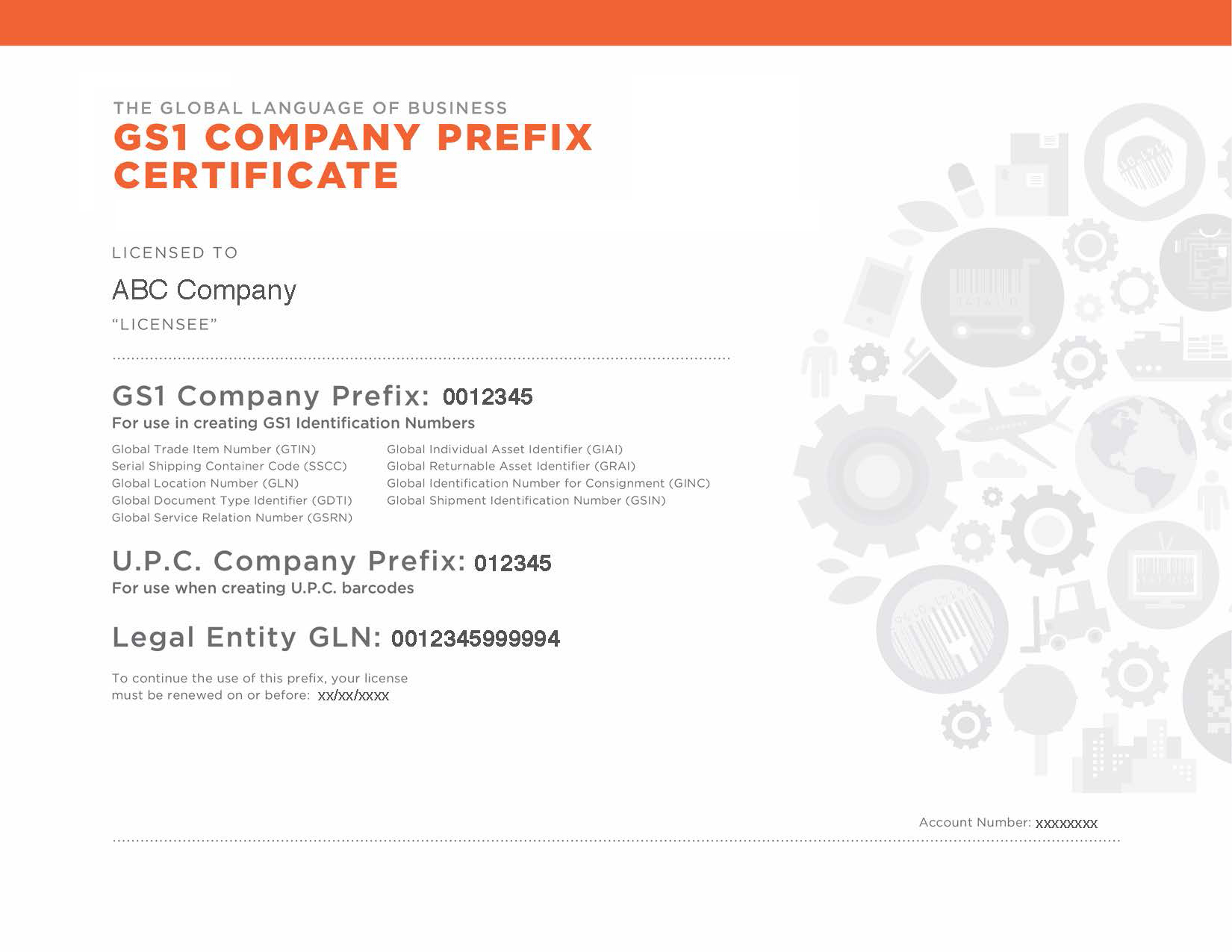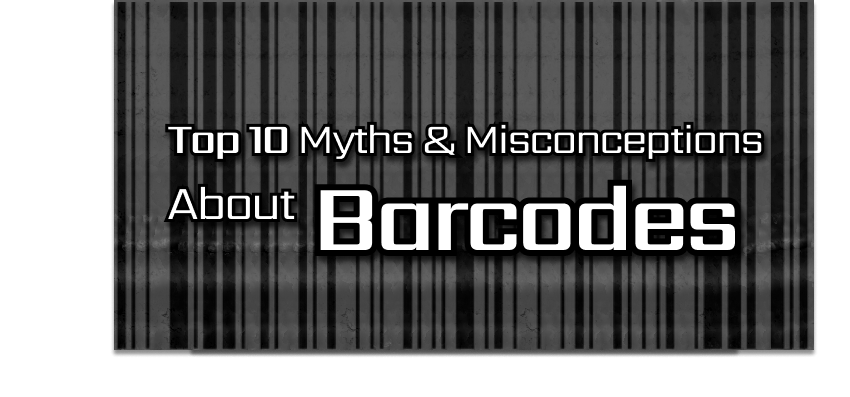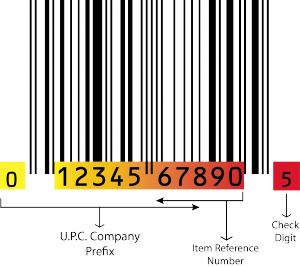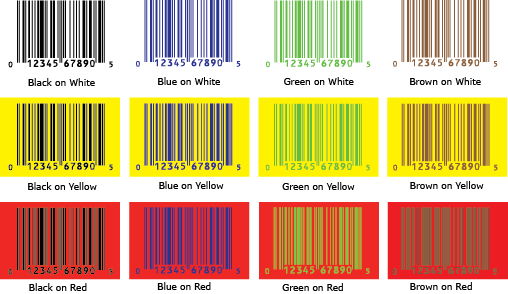Today, if a company wants to sell in stores and/or online, they are most likely going to need barcodes on their products.
Since there is so much conflicting and inaccurate about barcodes online, we have come up with some of the most frequently heard myths, so that you can tell fiction from fact!
1. UPC barcodes contain information about the product’s country of origin.
This is a common misconception, but UPC barcodes do not contain information about a product’s country of origin. The barcode only contains a unique identifier for the product, which is used to look up information about the product in a database.
2. All products sold in the United States must have a UPC barcode.
This is not entirely true. While UPC barcodes are commonly used in the United States, they are not required by law. However, most retailers and online marketplaces require suppliers to use brand-licensed UPC barcodes. There are some small local retailers and online sites that do not require suppliers to identify their products with barcodes.
3. UPC barcodes can only be used for products sold in the United States.
This is a myth. The acronym UPC stands for “universal product code”. By definition, a UPC barcode is accepted in the United States AND every other country. Since its inception, the 12-digit UPC has been able to be read by scanners around the world.
Companies outside of the US, identify their products with similar 13-digit identifiers called EAN (European Article Number or JAN (Japan Article Number). Prior to 2005, companies overseas using, EANs or JANs, were challenged to also have products marked with UPC barcodes, if they were to be sold in the United States. Since many retailers did not have scanners programmed to read the 13-digit barcodes, a UPC was required. Today’s global standards agency, GS1, was essentially a merger of the United States and overseas numbering agencies. One of the initial initiatives was to eliminate this problem.
A 2005 Sunrise Date was established as the starting point at which all GS1 barcode numbers (12-13 digits) could be read at stores throughout the United States. Consequently, UPCs, EANs, JANs can be read at every retailer AND companies who use UPCs should never mark their products with 13-digit identifiers.
IMPORTANT – As referenced in other myths listed below, there are numerous companies that advertise online and propagate misinformation. These companies, called resellers, offer misleading barcode alternatives for low prices. A quick way to identify the legitimacy of one of these resellers is when they mention they provide BOTH UPC and EAN barcodes. Avoid these companies at all costs!
4. All UPC barcodes available online are the same.
This is a dangerous misconception. To best understand why this issue is a problem, it is important to understand the definition of common terms.
UPC (Universal Product Code) – A 12-digit identifier based on global standards to identify individual items.
GTIN (Global Trade Item Number) – This is an umbrella term to describe GS1 identifiers whether they are 12,13 or 14 digits. A UPC is a form of a GTIN. Many requirements, such as Amazon’s, use this term to describe UPC/EAN/ISBN identifiers.
UPC Company Prefix – A unique 6-10 digit licensed number to identify a particular company/brand. Company Prefixes are ONLY assigned by a single global standards agency.
Single GS1 GTIN – To accommodate the needs of smaller companies, the standards agency licenses full 12-digit GTINs (UPCs). These single UPCs do not include a Company Prefix and have certain limitations.
Barcode – The barcode is the actual graphic representation of a GTIN that is comprised of dark bars upon a light background (spaces). Whereas the standards agency provides only the GTINs and educational resources, Bar Code Graphics provides the actual barcode image files for artwork and support.
Below is a breakdown of 3 different categories of UPCs available from online searches.
- Brand Licensed GTINs From Global Standards Agency (GS1). Since consumers and retailers need to trust the authenticity of products and their associated product information, most retailers REQUIRE that suppliers ONLY get GTINs licensed from the standards agency. Amazon and many other large retailers will deactivate current listings and prevent new items from being added to a catalog if they are not validated against the global company prefix database. Note: the global standards agency only provides the GTIN (identifier) and companies obtain the actual barcode image files and support from Barcode US.
- UPC Reseller Using Older Shared Company Prefix. The majority of discounted UPCs are available from “resellers” using older company prefixes. Obtaining UPCs from a reseller is not illegal BUT these cannot be used by most retailers and Amazon, despite what is claimed on their website. It is important to note that many of these sites indicate their UPCs originate from GS1 but that is just confusing new companies that might not know they need to license the GTINs in their own name. These UPCs may be fine for small local retailers and individual websites but they severely limit a company’s ability to grow.
- Discounted UPC Provider Making Up Numbers. It is sad to say but this phenomenon is real, and many companies get dupped. Since there isn’t an accreditation organization overseeing UPC resellers, companies really cannot check the legitimacy of a reseller. Amazon routinely deactivates product listings when GTIN data is compromised due to duplication. If your company believes a “discount” UPC will fit your needs, we encourage you to do due diligence. It is a good idea to make sure a physical address and phone number are included on the website. In addition, check BBB and other state-governed websites for legitimacy.
5. Amazon can accept UPCs from resellers
This is completely FALSE. Despite what is conveyed on discount resellers’ websites, Amazon completely reworded their requirements to mandate vendors to ONLY use UPC (GTINs) licensed to their specific brand. There are hundreds of video titles and websites making erroneous statements on how to either circumvent Amazon requirements OR blatant mistruths. If Amazon flags an item with a GTIN not correctly licensed to a vendor, they will either reject a new item OR worse, delist an existing item.

6. UPC barcodes can be used to determine the price of a product.
This is a myth. While retailers use UPC barcodes to track inventory and sales, the price of a product is usually determined by the retailer’s pricing system, which is separate from the barcode. Product data and price reside in databases and the GTIN is the key that is used to associate the item to the database record.
7. There is a global UPC product database.
This is a myth. As of 2023, there is not a single master global UPC database. Despite what many search results display, such as “UPCdatabase, UPCitemdb, UPClookup”, there is NOT a database that actually contains authorized and validated UPC product data. To learn more, please visit, Whose Controlling Your Online UPC Product Content.
8. Scanning a UPC barcode with a mobile phone provides accurate information.
This is a myth. Unlike a QR code which normally contains an actual web address managed by the brand owner. The application developers commonly rely on unauthorized/crowd-sourced databases (see above).
9. A Certificate of Ownership is the same as a Company Prefix Certificate

This is a myth. When a company licensed a UPC Company Prefix or a Single GS1 GTIN, they receive a GS1 Certificate that conveys the association to the company/brand. Many retailers and marketplaces (JCPenney, Home Depot, Amazon, Kroger, etc.) require vendors to provide a current certificate to validate brand ownership. Some of the resellers dupe clients by providing a “Certificate of Ownership” or “Certificate of Authenticity”. These documents have not value to any trading partner since there is no authority validating legitimacy. Buyer Beware!
10. Manufacturers and retailers can validate GTIN ownership online.
This is TRUE, but with a caveat. The global standards organization does operate a free online tool called GEPIR, https://gepir.gs1.org/index.php/search-by-gtin , that enables anyone to verify the licensee of a particular GTIN (UPC). Please beware, one of the discount resellers created their own database called GEPIR and it is NOT authorized nor complete. Unfortunately, many companies are duped by this misleading tactic and eventually have to obtain correct GTINs after the fact.
Companies who subscribe to GS1 Barcode Support programs automatically get access to GTIN.cloud. This portal is where most companies who obtain GS1 GTINs manage their assignments, create barcodes and control their UPC product data. All GTINs managed on the GTIN.cloud portal can be viewed by the lookup function AND the associated valid GS1 Company Prefix Certificate is displayed.
BONUS: Barcodes can be printed in any color.
This is a common misconception. Ideally, barcodes are printed on black over a white background. However, there are other acceptable color combinations that may be used. To learn more about color options, please visit, www.barcode.graphics/upc-color-guide/
Companies who are new to UPC barcodes should visit www.barcode-us.com. If you require any assistance with barcoding, please feel free to contact us via phone, email or chat. We are here to help!








Comments are closed.